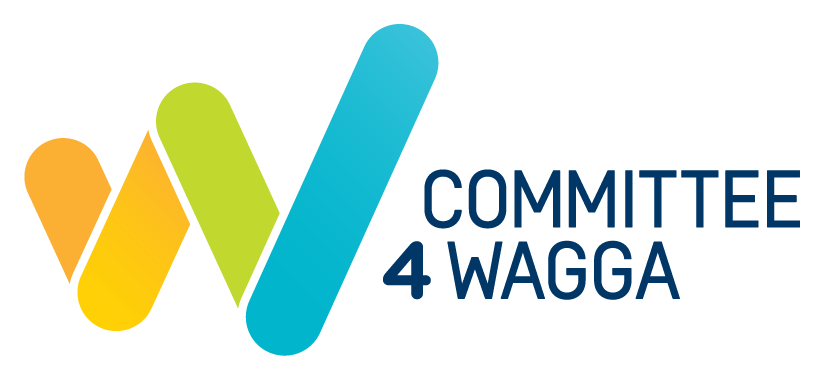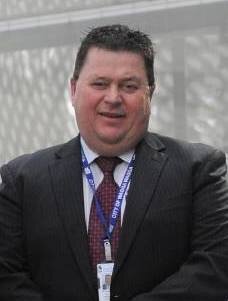Wagga's population boost relies on migration
Daily Advertiser 23rd August 2019
ANY future that has Wagga's population swell to 100,000 residents will be driven primarily by migration, says the city's regional activation director. Michael Keys, of Wagga City Council, admits it is a "very aspirational" task that lies ahead and will require significant growth "well-above historical levels". To reach the 2038 target of 100,000 people, the city needs to grow at 2.1 per cent each year, more than double the average growth rate of 1 per cent between 2006 and 2016. The outcome has the support of the state government, which released a 20-year economic vision for regional NSW in July last year endorsing the population boom. An upcoming seminar led by Committee 4 Wagga will address these, and other, critical growth factors to meet the 2038 target. Among the key issues to be presented at the September 27 seminar are business, health, education and government investments in industrial and community infrastructure. In the lead up to the seminar The Daily Advertiser will be exploring in detail these key issues. Mr Keys said migration will be the driving force behind the city's current population expanding by 33,000 people. "If we want to get anywhere near that 2.1 per cent level then we will have to have net migration coming into the area," he said. Wagga typically attracts new residents who reside within the state, including from neighbouring local government areas and Sydney. Between 2011 and 2016, the city attracted more than 1400 migrants from overseas.
"We are looking for a complete mix of migrants, right across the spectrum. There is not one particular workforce or employee that we are after," Mr Keys said. "We recognise that our biggest strength is our diversity, so we need workers for the health and education sectors, as well as manufacturing, logistics and defence. "That goes from the trades and services that support them ... right through to the highly skilled and highly qualified doctors, nurses and specialists in those fields." However, statistics from Forecast.id predict the city will fall short of the target by about 19,000 people based on long-term growth trends. Mr Keys is optimistic that the outcome will be reached by 2038 because upcoming investment opportunities had not been taken into account. “The recent periods of our city have been subjected to the global financial crisis and coming out of that, 10 years of high levels of drought, challenges on the agricultural front and uncertainty," he said. "We are looking to have that changed, to turn it around. "What's coming in the very near and medium-term future will certainly pave the way and open up new opportunities for a higher level of growth that we have not seen in the past. "Our growth comes through some key projects across the city, but also it's building on the current diversity and resilience of the city and economy that has shown that we have continued to grow in these tough times. "That's why we think that while it's a high level of growth, there's still something we should be striving for and continue to grow the city." And although the goal is to grow the number of residents in Wagga, size is just one piece of the puzzle.
Mr Keys said the age breakdown of the population is just as important. From now to 2036 the age structure forecast for Wagga indicates a greater growth in the non-working demographic, according to Forecast.id predictions. Those of retirement age will increase by 33.5 per cent and the population under the working age by 18.4 per cent. Although the largest group will remain in the employment age bracket, it will experience the lowest growth rate at 15.2 per cent. Achieving an age balance will be a challenge that Mr Keys said could be concerning, if not done correctly. He said the city requires a continuous stream of job-ready residents to fill current and future positions becoming available. "The challenge that all of regional Australia is facing, as well as metropolitan areas, is that as our population continues to age we are going to need people coming in to fill the roles so our service and administration sectors continue to grow," he said. "Our key challenge will be that we attract all ages, and that we are a city that caters for all ages and provide enough interest in employment and affordability to want to be here and establish a life and grow here." Moving forward, Mr Keys said the community needed to address "the bigger picture" in order to sustain future growth and attract new employees. It will come down to, but not limited to, Wagga's infrastructure, education opportunities, health services and roads, rail and airport connections.
Wagga City Council's regional activation director Michael Keys says migration is key to growing the city's population.
Committee 4 Wagga chief executive Alan Johnston said migrants will be the initial driver of population growth. Therefore, the city needs to develop a sales pitch to attract people who are living in metropolitan areas. "Future residents will consider cost of living, what there is to do, sporting and cultural opportunities, education and the discretionary spend lifestyle of smashed avocado for Saturday morning brunch," he said. However, these are secondary to job availability and career progression, which are the biggest drawcards for future residents. The state government's report estimated 14,000 new jobs for the Eastern Riverina by 2038. Mr Johnston said the city needs to be attractive to not only future employees, but businesses as well. "Their decision is cost inputs and connectivity to customers, suppliers and the rest of the world. We need to demonstrate that those can be sourced here," he said. "On the other hand, if they are relocating, they have to be comfortable that there is an employment pool that meets their needs first." Retention of current residents is a "quick way to boost numbers" rather than attracting new people. "It's easier to keep people in the region, if the jobs are there, instead of bringing people out and convincing them that this isn't the wild west," Mr Johnston said. But the 2016 census appears to show that it was not an area currently taken advantage of. The highest age group migrating to the city was between 18 and 24 years old.
Committee 4 Wagga chief executive Alan Johnston says the initial driver will come from migration.




